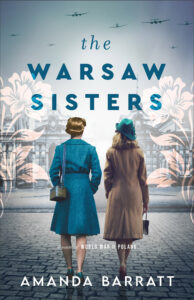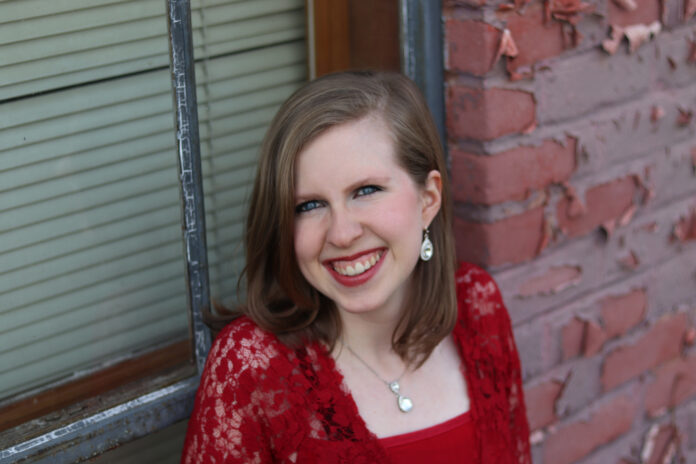Welcome to the blog Amanda! Today, we’ll be talking about Amanda’s latest release The Warsaw Sisters. First, tell our readers about this new release.
The Warsaw Sisters tells the story of twin sisters, Antonina and Helena, and their journeys of resistance and resilience in occupied Poland during WWII. It explores events and heroes pulled from the pages of history, such as the daring network of women who rescued hundreds of Jewish children from the Warsaw ghetto and Poland’s secret army that rose up in 1944 in a heroic and tragic battle for the city’s freedom. At its heart, it is a novel about women forged by war and the enduing bond between sisters.
What was the inspiration for your novel and what makes this novel stand out from the other books you have written?
The theme of women’s experiences in war is found in many of my novels, and it’s a topic that ceaselessly inspires and intrigues me. While researching Poland during the Second World War, I uncovered stories of women whose quiet heroism and dauntless courage left me in awe. Women who smuggled Jewish children out of the Warsaw ghetto and risked their lives to shelter them in their homes. Women who joined the resistance and fought in the Warsaw Uprising. Women who suffered and sacrificed as soldiers. As I explored the stories of these women, the characters of Antonina and Helena began to take shape.
Your two protagonists, Antonina and Helena Dąbrowska, are sisters living in Warsaw, Poland. As their city buckles under the German occupation, both sisters choose a different path of resistance. Can you provide more information on how they chose to help in the war efforts?
Antonina shelters Jewish children from the Warsaw ghetto as part of a network organized and operated primarily by women, the most famous of whom is Irena Sendler. Together these women saved hundreds of children. Though Irena Sendler has become famous—and deservedly so—she did not act alone. Through Antonina’s character, I wanted to remember the others who risked their lives to protect the most vulnerable. Helena is inspired by the women who joined the Home Army, one of the largest resistance organizations in occupied Europe. When the Warsaw Uprising broke out in the summer of 1944, nearly twelve thousand women served in various roles, including couriers, nurses, and combatants. Over a thousand lost their lives during the sixty-three days of battle. Their stories are extraordinarily compelling yet have gone untold for the most part, especially in North America. It is an honor to pay tribute to these remarkable women and bring their stories out of the shadows.
Your careful attention to detail is evident as you write about the events that took place in Poland during the Second World War. What type of research was required to accurately portray the war developments in Poland and the type of resistance that occurred among the Polish people?
While researching the Second World War in Poland for my novel Within These Walls of Sorrow, I discovered many of the historical events that inspired The Warsaw Sisters. The research process for my last book flowed almost seamlessly into this one as I delved deeper into Poland’s wartime history. I relied on more than a hundred nonfiction titles, including dozens of memoirs, to gain a perspective of the historical panorama as well as the deeply personal experiences of individuals. Many of the scenes in the novel are drawn from these sources. I also studied numerous transcribed interviews with Home Army veterans who fought in the Warsaw Uprising. One of the most memorable experiences came when I visited a museum that housed a collection of artifacts and documents related to the Polish resistance and the Warsaw Uprising. The museum was closed at the time due to renovations, but the director generously gave me a tour and even allowed me to handle some of the artifacts. I’ll never forget standing in front of a case that held copies of the newspaper published by the Polish underground and holding a cap worn by a soldier during the Uprising. History I had long been researching became so tangible in those moments, providing a reminder that the past was as three-dimensional as our world today.
The Warsaw Sisters explores themes of courage, sacrifice, and the resilience of our deepest bonds. Can you unpack some of these themes?
Throughout my research, I was inspired and moved by stories of courage birthed by adversity. The women who rescued Jewish children and fought in the Warsaw Uprising weren’t storybook heroines on a quest for adventure. They were ordinary women thrust into a war they did not choose, forced to face the occupation of their homeland, and the loss of their freedom and often the ones they loved. And then they had to decide what their response would be. They didn’t think of themselves as courageous, yet they acted with incredible courage. Theirs wasn’t a courage of choice so much as necessity. Circumstance demanded them to act and so they did, rather than stand by. In the years after the war, when asked about their activities, most of these women responded with something like, “What I did wasn’t extraordinary. It was normal.” They didn’t consider themselves heroes, yet their heroism left an indelible legacy.
Sisterhood, in all its complexities and resilience, is at the very heart of the novel. It’s a bond that changes with time and circumstance, but in the most fundamental ways, remains changeless. I loved exploring the often-complicated yet abiding connection between sisters through Antonina and Helena’s relationship.
What first drew you to Poland as the setting for your novel?
As I researched, I became absolutely riveted by the stories I discovered, asking myself, “Why haven’t I heard of this before?” In the chronicle of the Second World War, Poland’s story has often been minimized. The role of the Polish resistance is frequently overshadowed by the resistance narratives of other European countries. Being the greatgranddaughter of Polish immigrants, I have a special affinity for Poland’s history and culture. It is my hope that this novel will illuminate both the tragedy of the wartime years and the heroism of the people of Poland. It’s a deep privilege to explore their stories, and I hope to continue to do so. There are so many that beg to be told.
What do you hope readers will gain from reading The Warsaw Sisters and how has this novel impacted your own life?
There is so much we can learn from searching the past, so many questions we can ask ourselves, so much that remains unchanged, even as so much has changed. I hope readers are inspired by the stories of what I call “the sparks of light in the night of war, the ordinary who quietly resisted” and find in them relevancy for their lives today. I pray the novel will also be a reminder that even in times of tragedy, even in a dark and broken world, we are not forsaken in the sight of the One who calls us His and holds our every moment in His hand.
You are passionate about uncovering oft-forgotten facets of history through a fictional narrative. How do you decide upon your next writing project?
Research can be likened to unwrapping layers of tissue paper as the process of writing one novel often leads to a discovery that sparks the next. As a novelist, I thrive on excavating forgotten fragments of history and I am always searching for stories. Stories that haven’t been told before or a fresh angle of a familiar historical narrative. Stories that make me pause and ask questions and delve deeper. When I find a story that takes hold of both my imagination and heart, I set about the task of exploring it through a narrative format.
How can readers connect with you?
For more information about my novels, I invite readers to visit my website (www.amandabarratt.net). It’s always a joy to connect on Facebook and Instagram as well.
Where can readers purchase a copy of The Warsaw Sisters?
The novel is available at all major online retailers as well as many local bookstores.
Thank you so much for joining us today, Amanda. Readers, here’s a look at The Warsaw Sisters…..
 On a golden August morning in 1939, sisters Antonina and Helena Dąbrowska send their father off to defend Poland against the looming threat of German invasion. The next day, the first bombs fall on Warsaw, decimating their beloved city and shattering the world of their youth.
On a golden August morning in 1939, sisters Antonina and Helena Dąbrowska send their father off to defend Poland against the looming threat of German invasion. The next day, the first bombs fall on Warsaw, decimating their beloved city and shattering the world of their youth.
When Antonina’s beloved Marek is forced behind ghetto walls along with the rest of Warsaw’s Jewish population, Antonina turns her worry into action and becomes a key figure in a daring network of women risking their lives to shelter Jewish children. Helena finds herself drawn into the ranks of Poland’s secret army, joining the fight to free her homeland from occupation. But the secrets both are forced to keep threaten to tear the sisters apart–and the cost of resistance proves greater than either ever imagined.
Shining a light on the oft-forgotten history of Poland during WWII and inspired by true stories of ordinary individuals who fought to preserve freedom and humanity in the darkest of times, The Warsaw Sisters is a richly rendered portrait of courage, sacrifice, and the resilience of our deepest ties.






